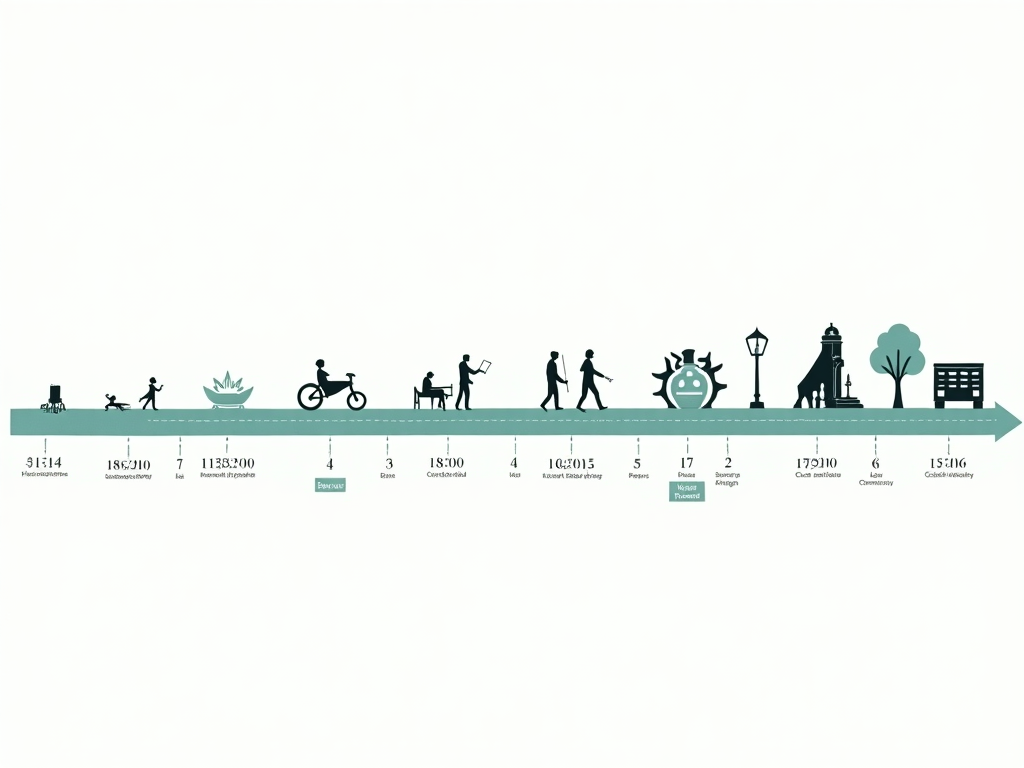Exploring the evolution and development of financial planning practices through the decades
Financial planning as a formal discipline has evolved significantly over time, responding to changes in economic conditions, technology, regulatory frameworks, and societal needs. Understanding this evolution provides valuable context for modern financial planning practices and principles.
While informal financial planning has existed since ancient civilizations began trading and managing resources, the formal profession and educational approach to financial planning is relatively recent. This timeline explores the key developments that have shaped financial planning education and practice into what we know today.

The early 20th century saw the emergence of fundamental concepts in financial theory and practice. The establishment of central banks, modern banking systems, and early financial markets laid the groundwork for more formalized approaches to managing money. During this period, financial advice was primarily provided by bankers, insurance agents, and stockbrokers who focused on their specific products rather than comprehensive financial planning.
Following World War II, economic growth and increasing middle-class prosperity created new opportunities for personal financial management. The GI Bill in the United States enabled millions of veterans to pursue education and homeownership, while similar programs in other countries helped rebuild economies. This period saw growing interest in investment opportunities and retirement planning as people began to accumulate more wealth.
The 1960s marked the beginning of financial planning as a distinct profession. In 1969, a group of financial services professionals met in Chicago to discuss the creation of a new profession dedicated to serving clients' financial needs comprehensively rather than simply selling financial products. This meeting laid the foundation for what would become financial planning as we know it today.
The 1970s saw the establishment of formal education and certification programs for financial planners. In 1972, the International Association for Financial Planning (IAFP) was formed, and the College for Financial Planning was established. The first Certified Financial Planner (CFP) designation was awarded in 1973, setting professional standards for the industry. This decade also saw the emergence of financial planning as a discipline taught in educational institutions.
The 1980s were characterized by significant expansion in financial services and products. Deregulation of financial markets, the growth of mutual funds, and the introduction of new retirement account options (like 401(k)s in the US) created more complex financial landscapes that required specialized knowledge. Financial planning education began to cover a broader range of topics, including tax planning, estate planning, and risk management.
The 1990s brought technological advances that transformed financial planning. The rise of personal computers and specialized financial software enabled more sophisticated analysis and projections. The internet began to democratize access to financial information and education. Meanwhile, globalization created new investment opportunities and challenges. Financial planning education expanded to include global perspectives and technological applications.
Following financial scandals and the dot-com crash, the 2000s saw increased focus on ethics, transparency, and regulation in financial planning. The Financial Planning Standards Board (FPSB) was established in 2004 to develop and promote global standards for financial planning. Educational programs placed greater emphasis on fiduciary responsibility and ethical practice. The 2008 financial crisis further highlighted the importance of sound financial planning principles and education.
The 2010s were characterized by digital transformation in financial services. Fintech innovations, mobile banking, robo-advisors, and online educational platforms made financial planning more accessible to broader audiences. There was also growing recognition of the need for financial inclusion and literacy. Educational efforts expanded to reach underserved populations and address diverse financial planning needs across different demographics.
The current decade has seen an acceleration of digital trends in financial planning, partly driven by the global COVID-19 pandemic. Virtual client meetings, digital documentation, and online educational resources have become standard. Financial planning education has evolved to take a more holistic approach, recognizing the interconnection between financial wellbeing and overall life satisfaction. There is increasing focus on behavioral finance, environmental and social considerations in investing, and personalized planning approaches.
South Africa has developed a robust financial planning industry with its own unique characteristics and challenges. Key developments include:
South African financial planning continues to evolve, addressing unique challenges including economic inequality, varying levels of financial literacy, and the need to provide accessible financial education to a diverse population.

As we look to the future, several trends are likely to shape the evolution of financial planning education:
Advanced technologies like artificial intelligence, machine learning, and blockchain will continue to transform financial planning tools and educational approaches. Virtual reality and augmented reality may create immersive learning experiences that make complex financial concepts more accessible and engaging.
Financial education is moving away from one-size-fits-all approaches toward personalized learning pathways that address individual needs, knowledge levels, and learning preferences. Adaptive learning technologies will enable more tailored educational experiences.
There is growing recognition that successful financial planning requires not just technical knowledge but also an understanding of psychological and behavioral factors that influence financial decisions. Future financial education will likely place greater emphasis on behavioral finance principles.
As financial landscapes continue to evolve rapidly, continuous learning becomes essential. Educational models that support lifelong financial learning and adaptation to changing circumstances will become increasingly important.
Financial planning education will continue to expand its scope to address diverse cultural perspectives, global interconnections, and the needs of previously underserved populations. Inclusive approaches that recognize different financial values and priorities will be essential.